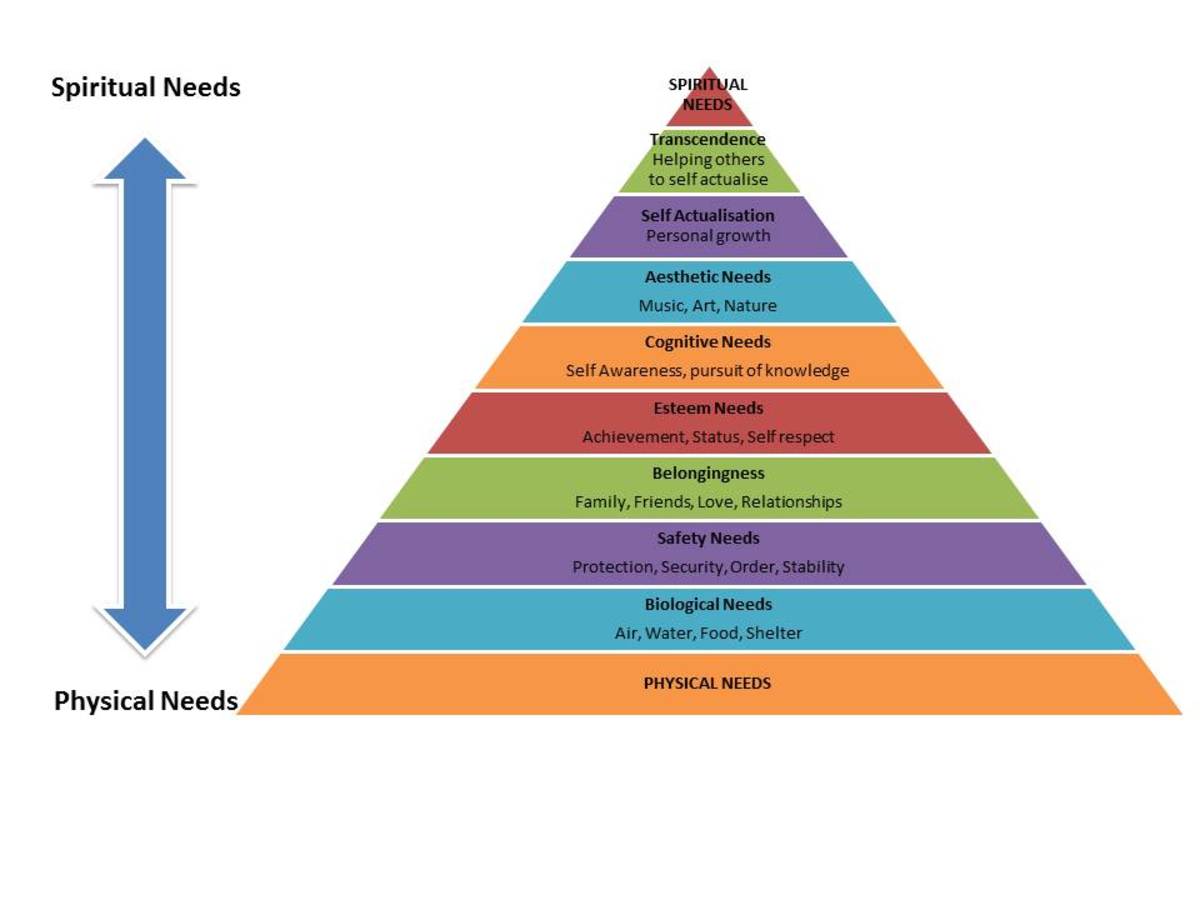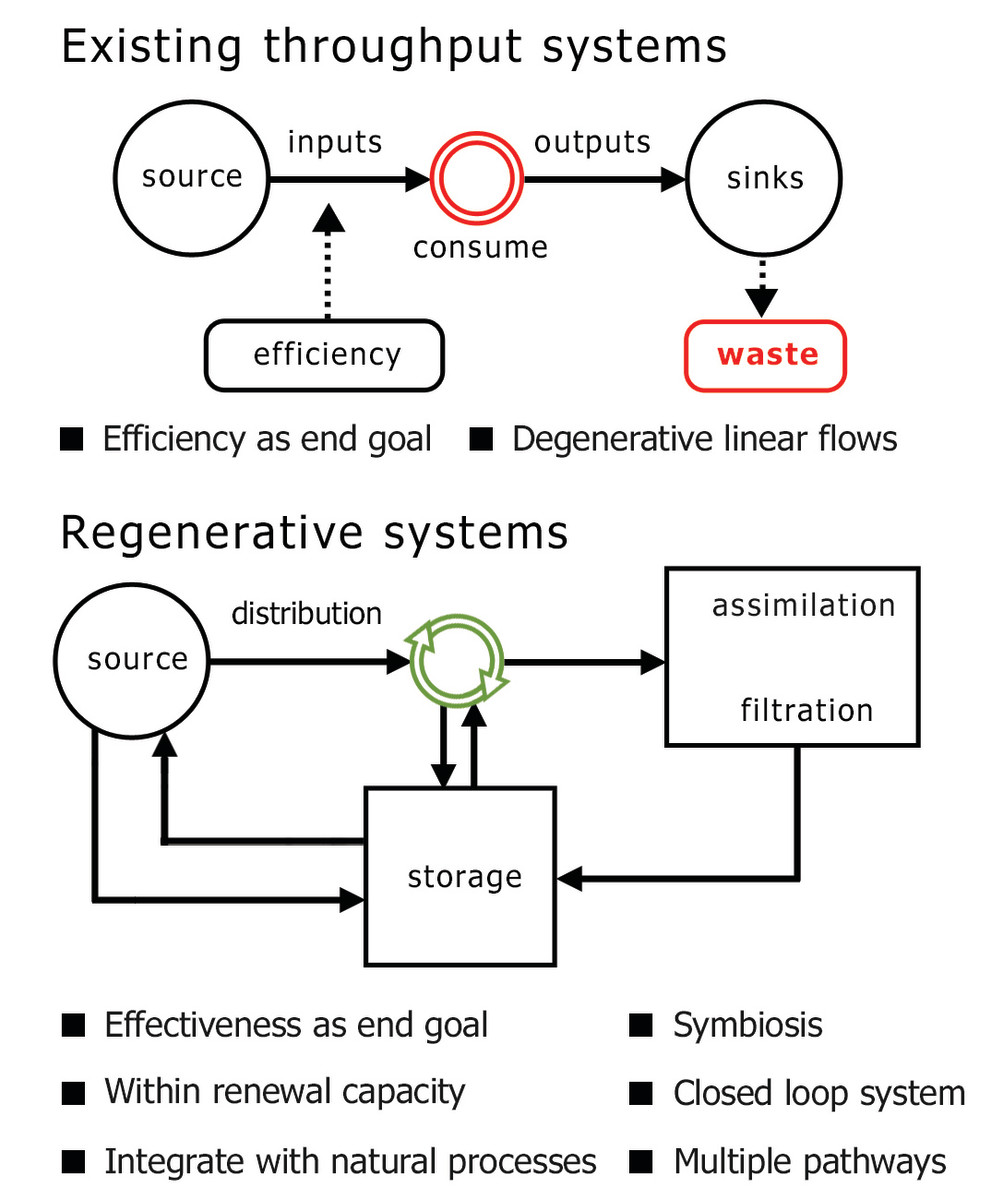Maslow, Sustainability and Design Like You Give a Damn (book review)
In 1943, Abraham Maslow proposed his theory that there is a hierarchy of needs, each level of which must be met for human beings to proceed on to the next level and eventually to self-actualization and social harmony. While there have been numerous theories posed since that time which compliment, contradict and expand upon this idea, there is a basic simplicity in Maslow’s hierarchy which makes sense at a very human level. When a human being is desperately wondering where the next meal will come from or if she is going to make it through the night as she fights off disease or deprivation, she simply does not have the emotional or physical energy to concern herself intensively with issues such as creativity or building self-esteem. She is worried about survival.
At the bottom of Maslow’s hierarchy is the need for such basic life sustenance requirements as food and air. Just above this level is the need for physical safety, a key component of which is the regular access to secure and stable shelter. While most people in the world as we experience it are spending their lives working towards the goals of the highest levels of Maslow’s hierarchy – trying to find themselves, so to speak – there continue to exist populations of people throughout the world who are still struggling to get their basic needs met. There are entire groups of people who do not know for sure that they will have a home to live in tomorrow or whose structures are so inadequate that they can be called anything but safe or stable.
Cameron Sinclair and Kate Stohr saw this problem and decided to do something about it. In 1999, they joined forced to form Architecture for Humanity, “a grassroots nonprofit organization that seeks architectural solutions to humanitarian crises”. In short, this on-the-edge organization works to link members of the design field with a way to give back to the world around them by providing education towards solutions for global problems which are rooted in sustainable design. By encouraging the development of socially conscious design methods, Architecture for Humanity creates a place where people can come together to find innovative design solutions for building (and re-building in cases of national disaster) shelter for others across the world. By doing this, they are helping to set the stage for a mass movement from global concern about the basic lower-levels of Maslow’s hierarchy to a land filled with the potential for self-development on multiple levels by people who interact together on an international scale.
Design Like You Give a Damn: Architectural Responses to Humanitarian Crises takes a look at the work being done around the world which meets the goals of Architecture for Humanity. The full-color book profiles the work of designers across the globe who are committed to providing sustainable solution shelter for the betterment of social welfare, including post-emergency disaster relief, transitional housing options and the addressing of issues from homelessness to the need for sanitary water near living conditions. Each story, on its own, offers a brief moment of inspiration to the reader who can see the good being done by people who choose to use their skills to improve the lives of others. When combined, these stories create a book which can motivate masses towards movement up Maslow’s hierarchy on a grand scale.
The book, as reading material, is dense. There are dozens of stories in each section and they each employ language which is not natural to the conversation of those who are not involved directly in the design field. However, the book is filled with full-color pictures of the lives of those people who are being deeply affected by the development of the organizations profiled in the book. Weaved together with the profiles of the companies, the stories of those whose lives are touched by the work and an introduction which provides the reader with a working understanding of the past century’s developments in terms of design, Design Like You Give a Damn provides a complete look at the nature of a number of social issues and the means for working towards their resolution.
Take, for example, the profile of Oxfam, an organization which works to “build transitional housing using materials that can be repurposed for the construction of permanent housing”. Oxfam worked with people in the town of Tangalle in Sri Lanka to build transitional housing for seventeen families affected by the tsunami of 2004. By finding creative ways to make use of inexpensive materials such as corrugated roof sheeting and available wood pieces which were durable enough to eventually be repurposed for use in permanent housing, Oxfam was able to create structures which not only provided immediate relief to displaced families but which would also help them to rebuild their lives in the long-term. The homes could be used for approximately one year while the families re-stabilized their lives and could then be easily dismantled for sale or for reconstruction in to permanent housing. By providing these families with that basic human need for shelter, Oxfam gave them the stability necessary to achieve higher levels on Maslow’s scale and so to build new lives for themselves.
The Design Like You Give a Damn profile of Oxfam takes up only six pages in the 330 page book, but within those pages it contains the stories of dozens and dozens of people whose lives were changed by the work of the organization. The book offers the technical talk which describes the work of the program but also provides information about the actual effects seen by the families touched by Oxfam. The profile includes four large, full-color pictures which let the reader visually explore the details being described in the prose. More than this, these pictures allow the reader to get a feel for who the real people are behind the work of such organizations.
It is this human connection that the book provides which makes it an inspirational piece of work. With each turn of the page, the reader is welcomed in to the brief story of how a few people got together one day to form an organization which reaches person after person after person all around the globe. In the face of large disasters – such as the tsunami of 2004 or the effects of Hurricane Katrina – we are reminded that the world is an interrelated place. What happens in one part of our global landscape has deep and lasting effects on the rest of the world. Design Like You Give a Damn offers a visual and explanatory reminder that each of us can use the field which we have decided on making our life’s work for affecting this greater global landscape.
In Maslow’s theory, what happens when we get our basic needs met is that we are able to go on to concern ourselves with more innovative options for living our lives. This is certainly a biased perspective in many ways – as the history of people does indicate that innovation comes during all times of life. But at a basic level, there is some truth to Maslow’s proposition. When we are in a social position which allows us to be generally free of the concern for food and safety – because we know that there will be a stable supply of it – we can turn our minds to greater things. The human mind is capable of amazing tasks, a trait which one is reminded of when reading Design Like You Give a Damn. For those of us, like the authors, who are in a place of relative safety, it is possible to use our position to assist the lives of those around us. This book reminds you of all of the good reasons that there are for doing just that.









